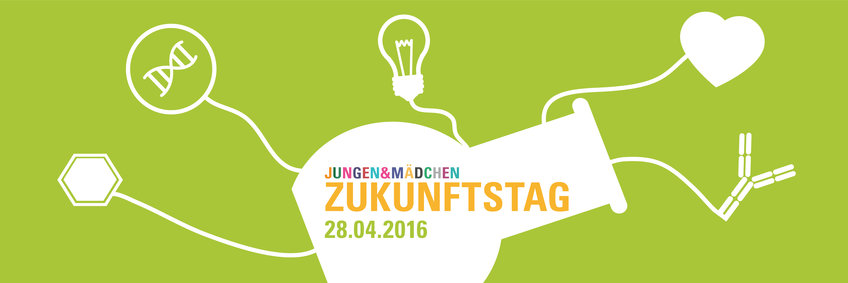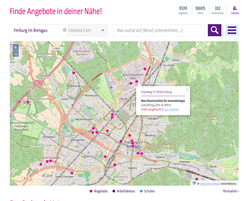
A review: Zukunftstag 2016
Zukunftstag 2016 at the Max Planck Institute of Immunobiology and Epigenetics (MPI-IE) as part of the nationwide Girls' Day & Boys' Day initiative. On April 28, 2016 the MPI-IE opened its doors to young adults, which were interested to visit the institute and wanted to learn more about the the exciting world of modern molecular biology and the profession of a scientist in this field of research.
“… and this moving chaos takes place all the time in your cells – even if you are sleeping.” Tim Lämmermann, group leader at the Max Planck Institute of Immunobiology and Epigenetics (MPI-IE) stands in front of a monitor and traces with his finger the way of a mitochondrion moving rapidily through a phagocyte.
Five boys and girls aged 12-15 years visiting the microscopy room of the MPI-IE. They stand in front of a so-called confocal microscope. With the help of this unit Tim Lämmermann is not only able to take pictures of individual layers of tissue or cells but also to capture a short video clip of the movements in the sample. The one-minute film, which he has just captured, shows the dynamic inner life of a cell. It gives the immune biologists the opportunity to explain that his lab relies on a detailed analysis of the movement of cells and cell components to study the process of wound healing.
Visiting the image facility was only one of many program items, laboratory visits and practical exercises at the Zukunftstag on April 28, 2016 at the MPI-IE. This event is part of the nationwide Girls’ Day and Boys’ Day initiatives with more than 15 000 events (nearly 10 000 of them are for girls, 6100 were aimed at boys) taking place in Germany. The initiatives aim to inform school children about occupations, in which either men or women are underrepresented.

21 boys and girls from ten differnt schools in Freiburg visited the institute. The first day for the children in a scientific research institute offered a huge and exciting program. After a brief introduction about the MPI-IE in the main auditorium the children had their first ‘scientific’ poster session. PhD students and Postdocs presented the research topics of their labs by the help of the posters known from the MaxDay. Nevertheless, the children often heard about chromosomes, chromatin and DNA for the first time. Thus, a little quiz completed this session. By the help of comments by the poster presenter listening to their first scientific poster session became an interesting challenge for the kids.
In our course lab the participants not only learned what DNA is, but also that it can quite easily extracted from cells. A simple buffer consisting of dishwashing soap and some other ingredients is needed to extract the DNA from a crushed strawberry or banana. For the children it was amazing to see how easily this magnificent molecule, that is so deep and well-packed in every living being, appears as a white clump made of string-like strands. In the following the children visited the Deep Sequencing Unit of the MPI-IE. Thomas Manke, head of the unit, and his team explained what now happens with DNA extracted from nucleus. “For us, it was not only important to explain the theoretical and practial knowledge about the deep-sequencing process”, says Thomas Manke, “I also told the kids how quickly the complete genome of a human being can be analyzed by high-throughput screening methods. And of course, that a lot of sensitive data are accumulated in this process, that need to be protected.”
After lunch, career planning became main topic. Do you have to study biology to work in a research institute like the MPI-IE? Do you need excellent marks in biology to become a biologist? All these question were adressed by the kids and answered by members of the institute from the labs and administration in a discussion about Career Opportunities at the MPI-IE in the main lecture hall.
The last sessions of the day were again dedicated to lab visits. One group visited the Fly Facility and learned all about the anatomy and life cycle of Drosophila melanogaster. Further the children observed the flies in the microscope and learned how to distinguish the different sexes. Meanwhile, the other group visited the imaging facility. In this session the children learned more about the different types of microscopes and Tim Lämmermann showed how these imaging tools support the scientist in their research.
Finally, the Zukunftstag 2016 at the MPI-IE was seven hours full of interesting science, new experiences and knowledge as well as fun for the kids.





